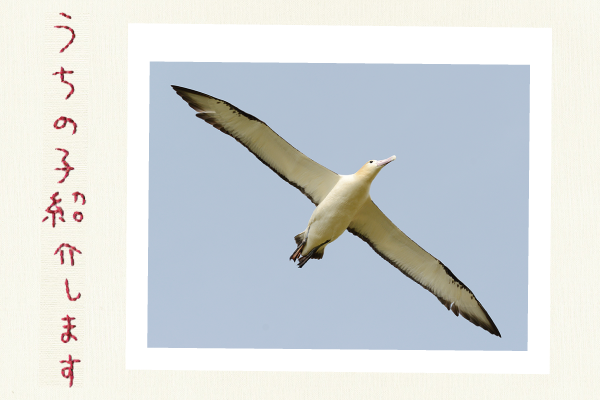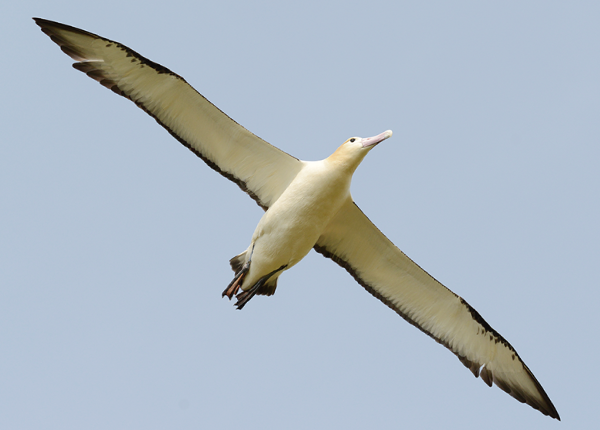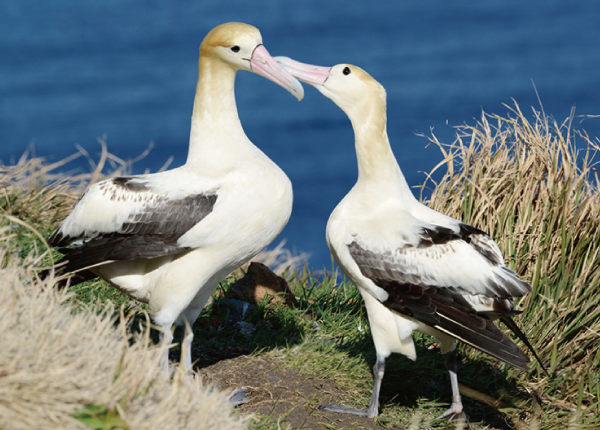- someone
- Information for Middle and High School Researchers
Introducing Our Children (55): The Single-minded Seabird Okinotayu
2021.07.01
Here we introduce the living creatures that are the subjects of our research. We will write about the interesting and fascinating aspects of these creatures, which we know because we deal with them every day.


The long-lived seabird, the Ocellated Flycatcher, with its wingspan of 2.3 meters and weight of 5 to 6 kg, can live to be nearly 70 years old. They spread their long, slender wings like gliders and use the force of the wind on the sea to fly at high speeds with little flapping of their wings. On land, however, its body shape makes it a slow runner, and it requires a long run to take off, which is why it is so easily captured and given the name "albatross. Their feathers are light and retain heat well, which is why they have been overhunted to the point of extinction.
Ocellated titmice spend the summer in the northern North Pacific, returning to the Torishima and Senkaku Islands of the Izu Shoto Islands in October to begin breeding. After spending the summer apart in the vastness of the ocean, the mating pairs are reunited at the breeding grounds and identify each other. On average, they begin breeding at the age of seven and lay eggs every year, but only one egg is laid in a year. Mating pairs take turns keeping the egg warm and nurturing it. While the mate flies around the sea for a week or more in search of food, the pair holds on to the egg, believing stubbornly that the mate will come back to them. The process of meeting a partner with whom they have such a trusting relationship involves the use of a beak ((beak)The two are said to be united by the rhythm of their courtship dance, in which they clap their hands together.
At one time, the number of breeding pairs was reduced to double digits (approximately 50), but as a result of 42 years of monitoring by Dr. Hiroshi Hasegawa of Toho University, an animal ecologist, and improvements to breeding grounds, the number of mating pairs has returned to more than 1,000 and the total number of chicks to more than 5,000. The love begins with a synchronized dance, and each year they are with the same partner, taking turns to keep the eggs for over two months and nurse the chicks for another four and a half months, making the Okinotayu both loving and patient. As our research progresses further, we are sure to see a different side of this species.
Interviewed by: Hiroshi Hasegawa, Professor Emeritus, Toho University
